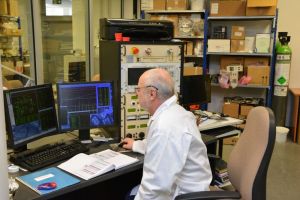Prof. Tomasz Goslar's research (Institute of Geology, AMU Faculty of Geographical and Geological Sciences) has contributed to an essential publication by Nature Communications. Professor Goslar was among the authors of the article ‘Wild and domesticated animal abundance is associated with greater late-Holocene alpine plant diversity’, verifying previous opinions and creating new insights into the role of humans in alpine ecosystem change.
New research reveals that wild and domesticated grazing animals have had a much greater impact on plant diversity in the European Alps than climate change over the past 4,000 years. By analysing historical sediment DNA (sedadna) from 14 lakes, the researchers identified 603 plant species along with wild and domestic mammal tracks. Sheep were the first domesticated animals to appear around 5,800 years ago, while cattle emerged in the early Bronze Age. Whereas wild ungulates and sheep have had a moderating effect, the cattle have greatly increased plant diversity over the past 2,000 years, stimulating the formation of richer mixtures of grasses and flowering plants. These findings challenge assumptions about climate-induced ecosystem change and highlight the role of land use in maintaining mountain biodiversity.
Link to article: ‘Wild and domesticated animal abundance is associated with greater late-Holocene alpine plant diversity’ | Nature Communications
Source: Faculty of Geographical and Geological Sciences website | Success of a WNGiG scientist




